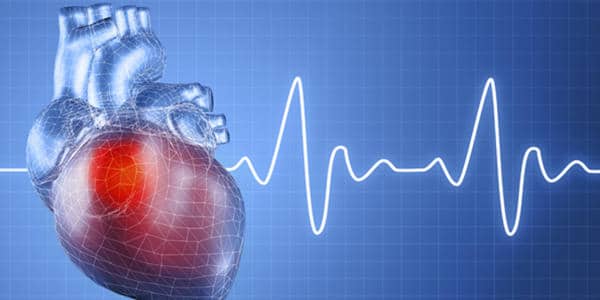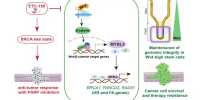Thin and brittle bones are strongly linked to a higher risk of heart disease in women, with thinning of the lower (lumbar) spine, top of the thigh bone (femoral neck), and hip being especially predictive of a higher risk of heart attack and stroke, according to research published in the journal Heart.
Osteoporosis, also known as brittle bone disease, is common, especially in women after menopause. It is distinguished by bone thinning and weakness, as well as an increased risk of fracture. Previous research has found that people with osteoporosis frequently have atherosclerosis (artery hardening and narrowing), implying that the two conditions may be linked.
According to the researchers, the risk of a cardiovascular death is higher in women (21%) than in men (15%), and the predictive risk framework for heart disease is skewed towards men, so factors that better identify women at higher risk of a heart attack or stroke are needed.
Thin and brittle bones are strongly linked to women’s heart disease risk, with thinning of the lower (lumbar) spine, top of the thigh bone (femoral neck), and hip especially predictive of a heightened heart attack and stroke risk.
Millions of women are screened for osteoporosis using a DXA scan, so this assessment may provide an ideal opportunity to identify any potential associations between thinning bones and atherosclerosis, as well as those women most at risk of heart disease, without incurring any additional costs or radiation exposure, they add.
To put this theory to the test, the researchers looked through the medical records of 50-to 80-year-old women who had a DXA scan to check for osteoporosis at Seoul National University Bundang Hospital between 2005 and 2014.
The final analysis included 12,681 women whose health was tracked for an average of 9 years using national registry data, after excluding those who already had heart disease or other serious illness at the time of the scan. During the monitoring period, 468 women (about 4% of the total) had a heart attack or stroke. 237 people (2 percent) died.

After controlling for potentially influential factors such as age, high blood pressure, high cholesterol, smoking, and a previous bone break, thinning/weakened bones, expressed as a low bone mineral density score at the lumbar spine, femoral neck, and hip, were independently associated with an increased (16% to 38%) risk of heart attack or stroke. A formal diagnosis of osteoporosis was also associated with a 79% increased risk of cardiovascular disease.
Adding a bone mineral density score or a clinical diagnosis of osteoporosis or osteopenia (precursor to osteoporosis) to clinical risk factors outperformed clinical risk factors alone in predicting risk.
It’s unclear how osteoporosis and atherosclerosis are linked, but long-term inflammation and cumulative oxidative stress play important roles in both age-related bone loss and atherosclerosis, according to the researchers, while sex hormones, particularly oestrogen, help regulate bone turnover and the vascular system.
As an observational study, it cannot establish cause, only correlation. The researchers also acknowledge several limitations to their findings, including the fact that the study only included women from one medical center in South Korea, so the results may not be more widely applicable. Furthermore, they were unable to collect potentially important information on physical activity levels or steroid use, both of which affect the bone mineral density and the risk of cardiovascular disease.
Nonetheless, they conclude, “Given that [DXA scanning] is widely used to screen for osteopenia and osteoporosis in asymptomatic women, the significant association between [bone mineral density] and increased risk of [cardiovascular disease] provides an opportunity for large-scale risk assessment in women without additional cost or radiation exposure.”
Drs Dexter Canoy and Kazem Rahimi of the Nuffield Department of Women’s and Reproductive Health at the University of Oxford agree in a linked editorial, adding that more research in different settings is needed.
They do, however, suggest: “Perhaps it’s past time to figure out how bone health affects vasculature and decipher the underlying pathophysiology that connects osteoporosis and atherosclerosis. In doing so, we might just discover new ways to treat and care for the hearts and minds of both men and women.”














